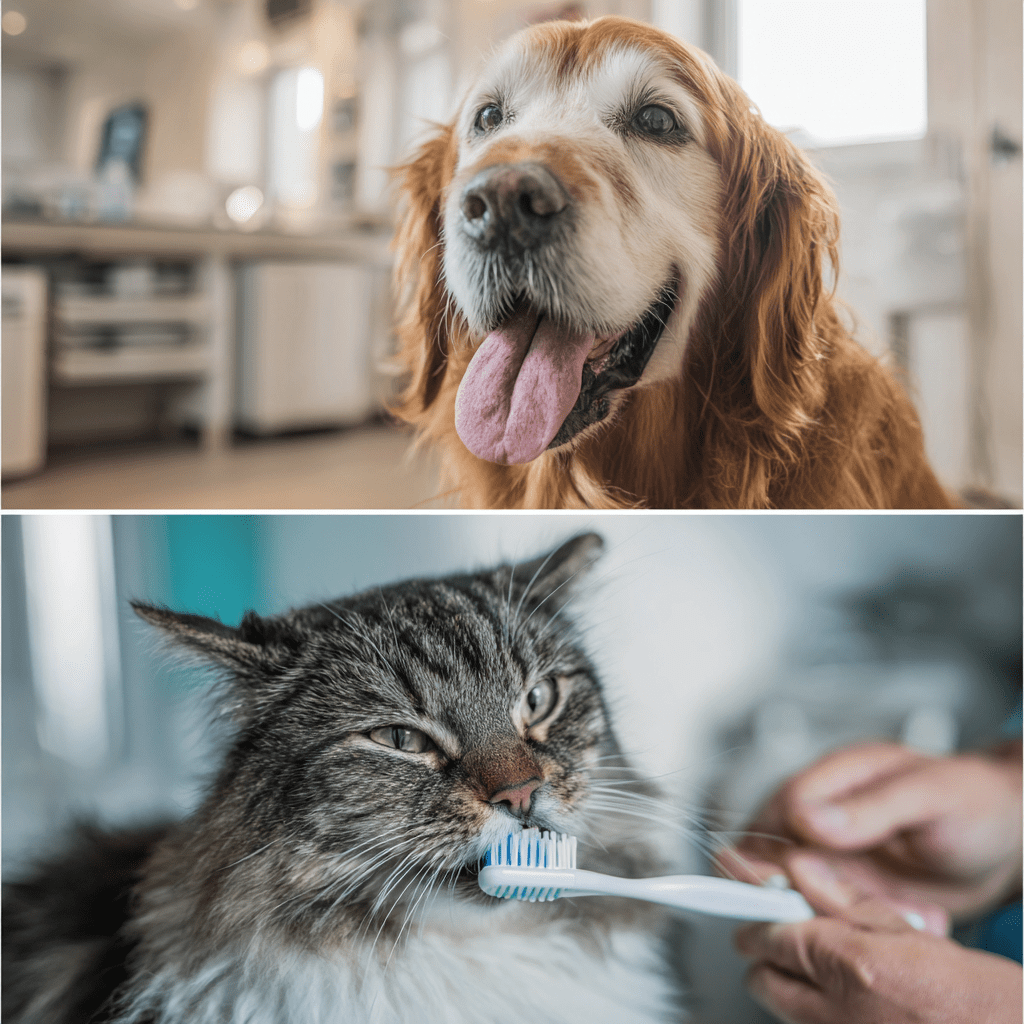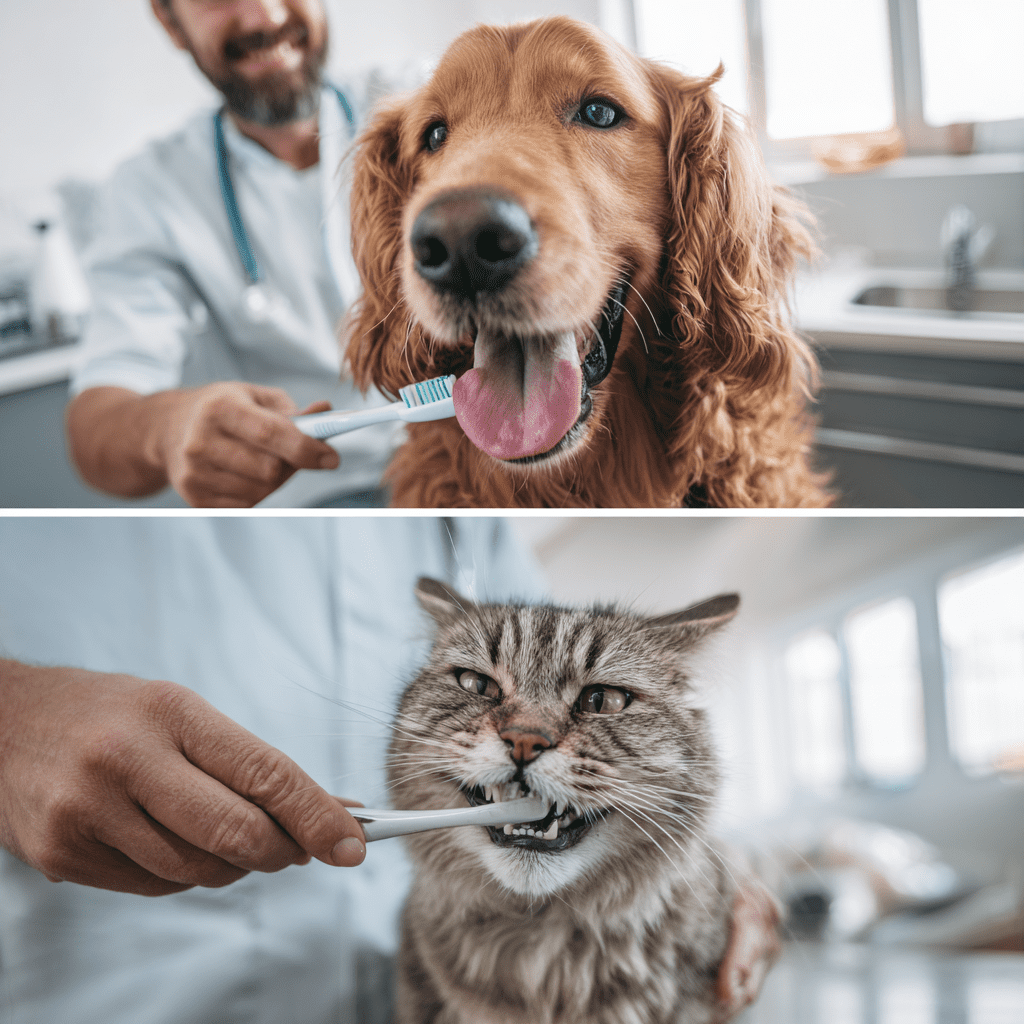Introduction: A Hidden Health Issue
When most pet owners think about their furry friend’s health, they often focus on diet, exercise, or vaccinations. But there’s one area that frequently gets overlooked: dental care.
Did you know that over 70% of cats and 80% of dogs show signs of dental disease by age three? Poor oral hygiene doesn’t just mean bad breath—it can lead to infections, pain, and even damage to vital organs like the heart, liver, and kidneys.
This blog dives into why dental care matters more than you might think, the risks of neglecting it, and practical steps to keep your pet’s smile bright and healthy.
Why Dental Care Matters
Dental health is about more than fresh breath or white teeth. It’s directly linked to your pet’s overall health and quality of life.
When bacteria build up in the mouth, it can lead to gum disease (periodontal disease). Left untreated, these bacteria can enter the bloodstream and spread to other organs, causing serious complications.
In short: a healthy mouth equals a healthier pet.
Common Dental Problems in Pets

1. Plaque and Tartar Buildup
- Plaque forms when food particles and bacteria accumulate on teeth.
- If not brushed away, it hardens into tartar, which irritates gums and harbors more bacteria.
2. Gingivitis
- Early stage of gum disease.
- Gums become red, swollen, and may bleed.
3. Periodontal Disease
- Advanced gum infection that damages tissue and bone.
- Can cause tooth loss and spread bacteria throughout the body.
4. Tooth Fractures
- Chewing hard objects like bones or antlers can break teeth.
- Painful and may require extraction.
5. Stomatitis (especially in cats)
- Severe, painful inflammation of the mouth lining.
- Common in some breeds and often linked to immune system issues.
Signs of Dental Trouble in Pets
Because pets can’t tell us when they’re in pain, it’s up to owners to recognize warning signs:
- Persistent bad breath
- Yellow or brown buildup on teeth
- Red, swollen, or bleeding gums
- Drooling more than usual
- Pawing at the mouth
- Difficulty eating or chewing
- Loose or missing teeth
If you notice these symptoms, schedule a vet check immediately.
The Dangers of Ignoring Dental Health
Neglecting dental care doesn’t just cause oral discomfort—it can lead to:
- Heart disease: Oral bacteria can travel through the bloodstream and affect heart valves.
- Kidney and liver problems: Infections strain vital organs.
- Chronic pain: Pets may suffer silently, leading to behavior changes like irritability.
- Shortened lifespan: Poor dental hygiene can reduce overall life expectancy.
Prevention: Daily Dental Care for Dogs and Cats
1. Brushing Your Pet’s Teeth
- Use a pet-safe toothbrush and toothpaste (never human toothpaste).
- Start slowly—let your pet lick the toothpaste first.
- Aim for daily brushing, but even a few times a week helps.
2. Dental Chews and Toys
- Specially designed chews can reduce plaque buildup.
- Avoid hard items (bones, antlers) that can fracture teeth.
3. Dental Diets
- Some veterinary diets are formulated to promote oral health.
- Larger kibble sizes or special textures help clean teeth as pets chew.
4. Regular Veterinary Cleanings
- Professional cleanings under anesthesia remove tartar and plaque you can’t reach at home.
- Vets also check for hidden issues like root infections.
5. Water Additives and Oral Sprays
- Can help reduce bacteria in the mouth.
- Best used as a supplement, not a replacement for brushing.
Special Considerations for Dogs vs. Cats
Dogs
- Small breeds (like Chihuahuas and Dachshunds) are especially prone to dental disease due to crowded teeth.
- Larger breeds may fracture teeth by chewing hard objects.
Cats
- Cats are more prone to conditions like resorptive lesions (painful holes in teeth) and stomatitis.
- Regular vet exams are critical since cats are masters at hiding pain.
Real-Life Story: Oliver’s Transformation
Oliver, a 4-year-old rescue cat, had terrible breath and refused to eat dry food. A vet exam revealed severe gingivitis and resorptive lesions. After professional dental treatment and a switch to regular brushing and dental treats, Oliver bounced back—playing, eating better, and finally pain-free.
This story highlights how much of a difference dental care makes—not just for health, but for quality of life.
Tips for Making Dental Care Stress-Free
- Start young: Puppies and kittens adapt more easily to brushing.
- Go slow: Introduce brushing gradually with short sessions.
- Reward often: Use praise or treats to create positive associations.
- Be consistent: Daily routines are more effective than occasional efforts.
How Often Should You Schedule Dental Exams?
- Annual checkups: For most adult pets.
- Biannual checkups: For seniors or pets prone to dental problems.
- At-home checks: Lift your pet’s lips weekly to inspect teeth and gums.
Conclusion: A Smile That Reflects Health
Dental care for dogs and cats is about more than aesthetics—it’s about preventing pain, disease, and even life-threatening complications. By making dental hygiene a priority, you not only improve your pet’s health but also ensure they live a happier, more comfortable life.
So, the next time you cuddle your furry friend and notice their breath or teeth, remember: a little dental care goes a long way. Your pet’s smile is worth it.
